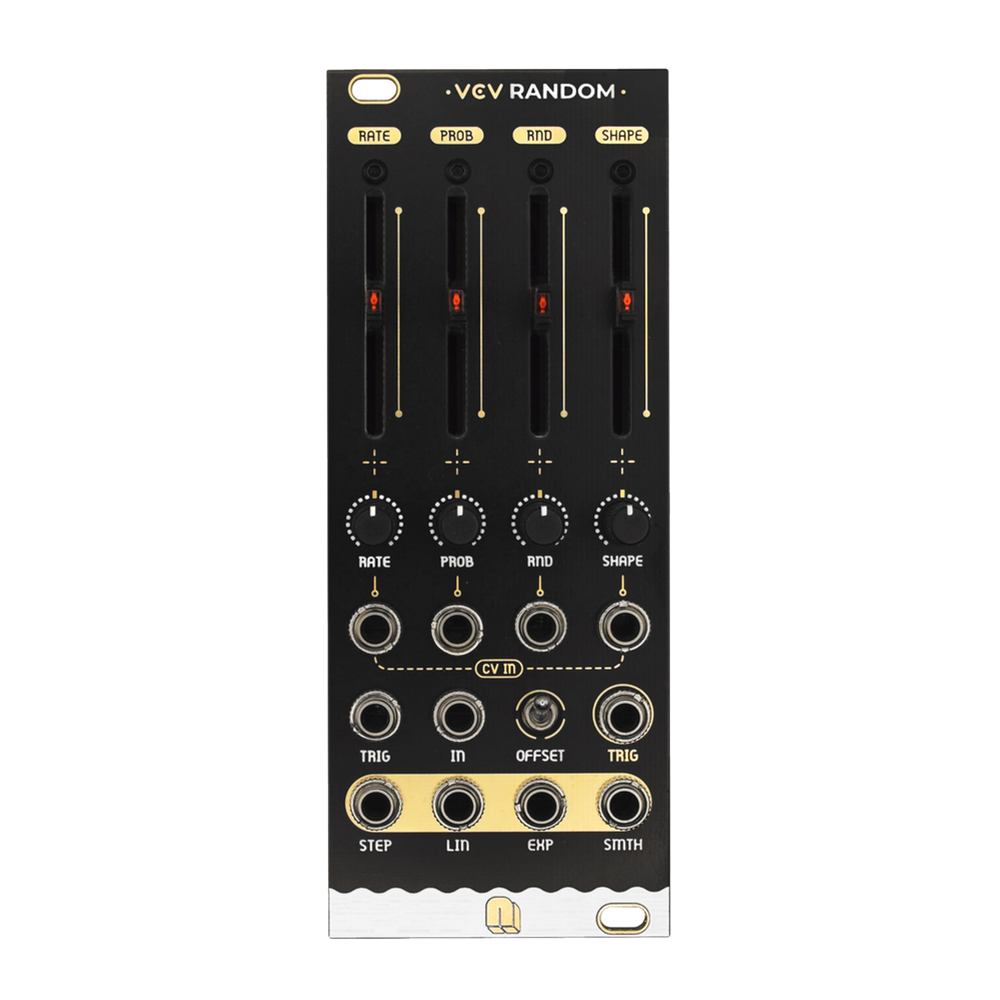VCV Random is a random CV generator with 4 types of randomness and a triggerable sample-and-hold function.
Sliders allow you to set the internal clock tempo (RATE), shape the probability of triggering (PROB), blend old with new values (RND) and set the shape of all four random outputs (SHAPE).
4 different controls
– RATE
Adjusts the internal clock’s tempo. Upon each clock trigger, the RATE slider light blinks, and there is a chance for the internal random source to generate a new value.
– PROB
Sets the probability of generating a new random value each clock cycle. If one is generated, the PROB slider light blinks and a pulse is emitted from the TRIG output.
– RND
Blends the previous value with a random one, in a proportion determined by the RND slider. It affects the range of the voltage output.
– SHAPE
Controls the transition shape to the new random value across all four outputs.
Internal random & clock source
Whenever the clock activates, the RATE slider’s light flashes. At the same time, there’s a chance that the internal random source will create a new value, depending on the PROB slider’s setting.
If it does create a new value, the PROB slider’s light flashes too, and a pulse comes out of the TRIG output.
External IN & TRIG inputs
If the TRIG input is patched, the RATE slider is ignored, and the internal clock is only triggered when an external trigger is received. The PROB slider is used to filter this trigger by applying some probability.
If the IN input is patched, this external voltage is used instead of a random voltage upon each trigger. The RND slider has no effect.
SHAPE Outputs
The STEP output changes in fixed steps. With the SHAPE slider at 0%, it moves to the new value in one quick step. At 100% SHAPE, it takes 16 even steps to reach the new value from one clock trigger to the next.
The LIN output changes in a straight line, its steepness controlled by the SHAPE slider. At 0% SHAPE, it instantly jumps to the new value. At 100% SHAPE, it gradually moves to the new value throughout the entire clock cycle. For values in between, it reaches the new value faster and then stays there until the clock cycle ends.
The SMTH output smoothly transitions between values, mimicking the curve of a sine wave. The SHAPE slider adjusts how quickly this happens. Once it reaches the new value, it stays there until the end of the clock cycle.
The EXP output changes values exponentially. The rate of this change depends on the SHAPE slider. At 100% SHAPE, the change is linear, meaning it straightens out.
Self-modulation
Thanks to a switch in the back of the module, you can normalize the LIN output to the 4 CV inputs and adjust the amount of modulation for each parameter with the attenuverters.
This adds another layer of randomness to your results, enabling more dynamic and unpredictable outcomes.
Specifications
- Width: 10hp
- Depth: 40mm
- Power: +12v 63mA / -12v 11mA

 switch to the U.K site >
switch to the U.K site >